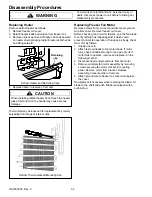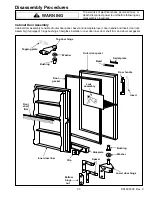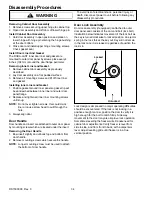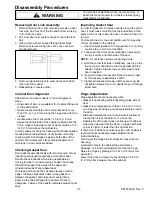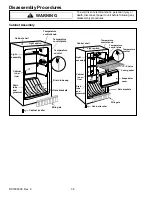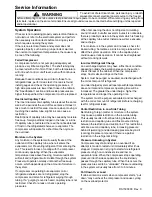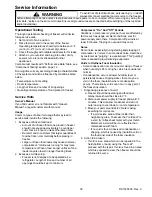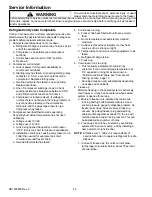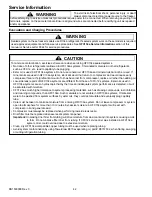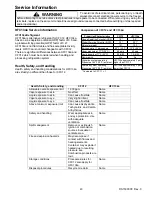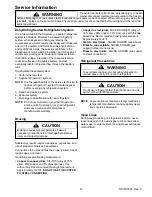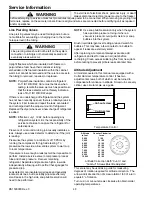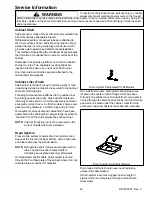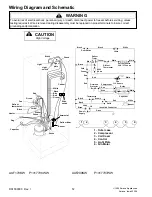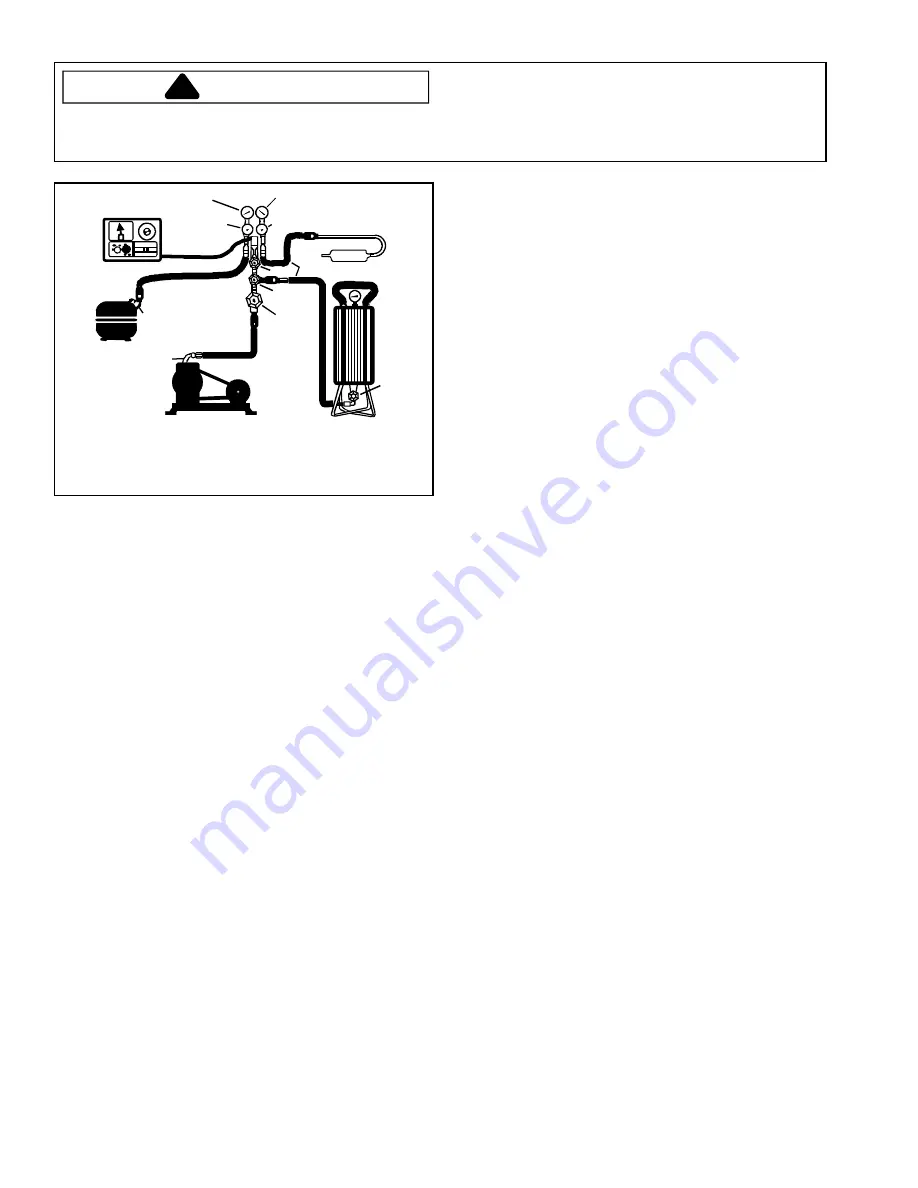
RS1500000 Rev. 0
46
Service Information
To avoid risk of electrical shock, personal injury, or death,
always disconnect electrical power source to the freezer
before attempting to service unless test procedures require power to be connected. When removing any wiring from
terminals, replace on the same terminals. Ensure all ground wires are connected before certifying unit as repaired
and/or operational.
WARNING
!
Vacuum Pump
.6 cm Copper
Tubing
Compressor
Compressor
Process
Tube
Charging Hose
Thermistor
Vacuum Gauge
Low Side Gauge
E
Valve
B
D
Valve
High Side Gauge
Charging Hose
Drier/Process Tube
F
Valve
Charging
Cylinder
C
A
Evacuation and Charging
Typical Setup
Before opening system, evaporator coil must be at
ambient temperature to minimize moisture infiltration into
system.
NOTE
: It is the responsibility of the service technician to
capture refrigerant in system for safe disposal,
before opening any refrigeration system.
1. After capturing refrigerant, replacing drier and making
any repairs, evacuate system from high side through
drier/process tube and low side through compressor
process tube simultaneously. Evacuation should not
be done through line piercing valve but through I.D.
opening of tubes.
2. With valves C and F closed to thermistor vacuum
gauge and charging cylinder, open all other valves
and start vacuum pump.
3. At approximately 77.66 cm (29") of vacuum, open
valve C to thermistor vacuum gauge and take
micron reading.
4. Continue evacuating system until thermistor vacuum
gauge registers 600 microns.
5. At 600 microns close valve A to vacuum pump to
allow micron reading in system to balance. Micron
level will rise. If in 2 minutes, micron level stabilizes at
1000 microns or below, system is ready for charging.
If micron rises above 1000 micron level and
stabilizes, open valve A to vacuum pump and
continue evacuating.
If micron reading rises rapidly and does not
stabilize, a leak still exists in system. Close valve
A to vacuum pump and C to thermistor vacuum
gauge. Invert charging cylinder and open charging
cylinder valve F to add partial charge for leak
checking. With leak detector, check manifold
connections and system for leaks. After locating
leak, capture refrigerant charge, repair leak, and
begin at step 1.
6. Once system is ready to charge, close valve A
(vacuum pump), C (thermistor vacuum gauge), and
E (low side manifold gauge).
7. Check serial plate for correct charge and set scale on
dial-a-charge cylinder for corresponding HFC134a
pressure reading.
NOTE
: Do not use captured or recycled refrigerant in
Amana units. Captured or recycled refrigerant
voids any Amana and/or compressor
manufacture's warranty.
8. Open valve F to charging cylinder and let exact
amount of refrigerant out of cylinder. Close valve.
Low side gauge pressure should rise shortly after
opening charging cylinder valve as system pressure
equalizes through capillary tube. If pressure does not
equalize, a restriction typically exists at capillary/drier
braze joint.
9. If no restriction exists, open valve E (low side
manifold gauge) and pinch off high side drier process
tube.
10.Start compressor and draw remaining refrigerant in
charging hoses and manifold into compressor
through compressor process tube. To check high
side pinch-off drier process tube, close valve D
(high side gauge). If pinch-off is not leaking, high side
pressure will not rise. If high side pressure gauge
shows an increase, repeat high side pinch-off and
open valve D. Repeat until high side pinch-off no
longer leaks.
11. Pinch-off compressor process tube and remove
charging hose. Braze stub closed while compressor
is operating.
12.Unplug dehumidifier from electrical outlet. Remove
charging hose and braze high side drier process tube
closed.

